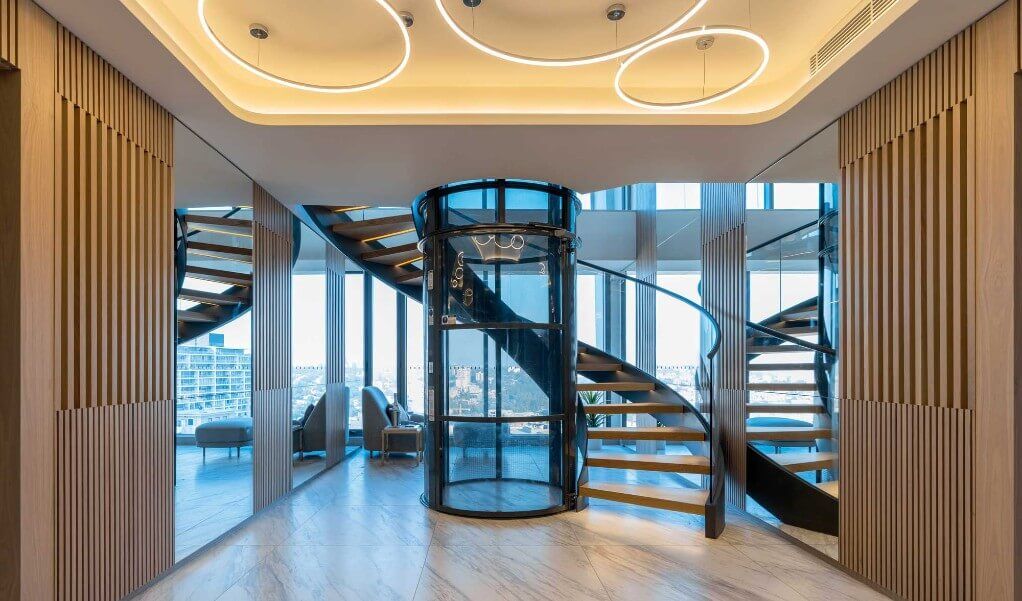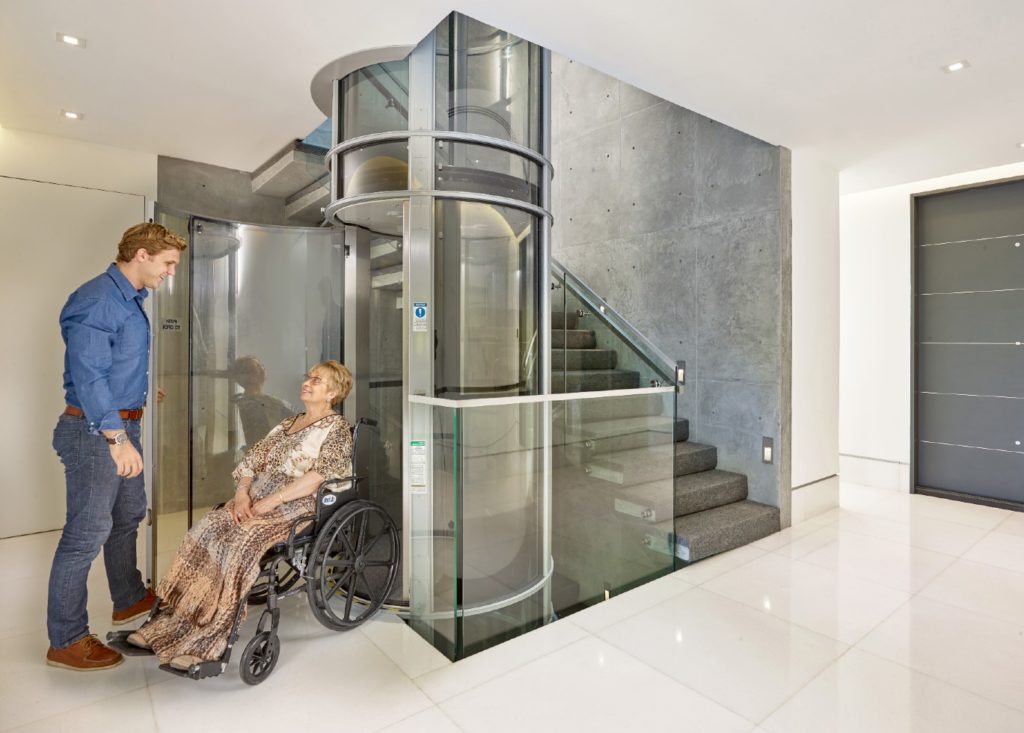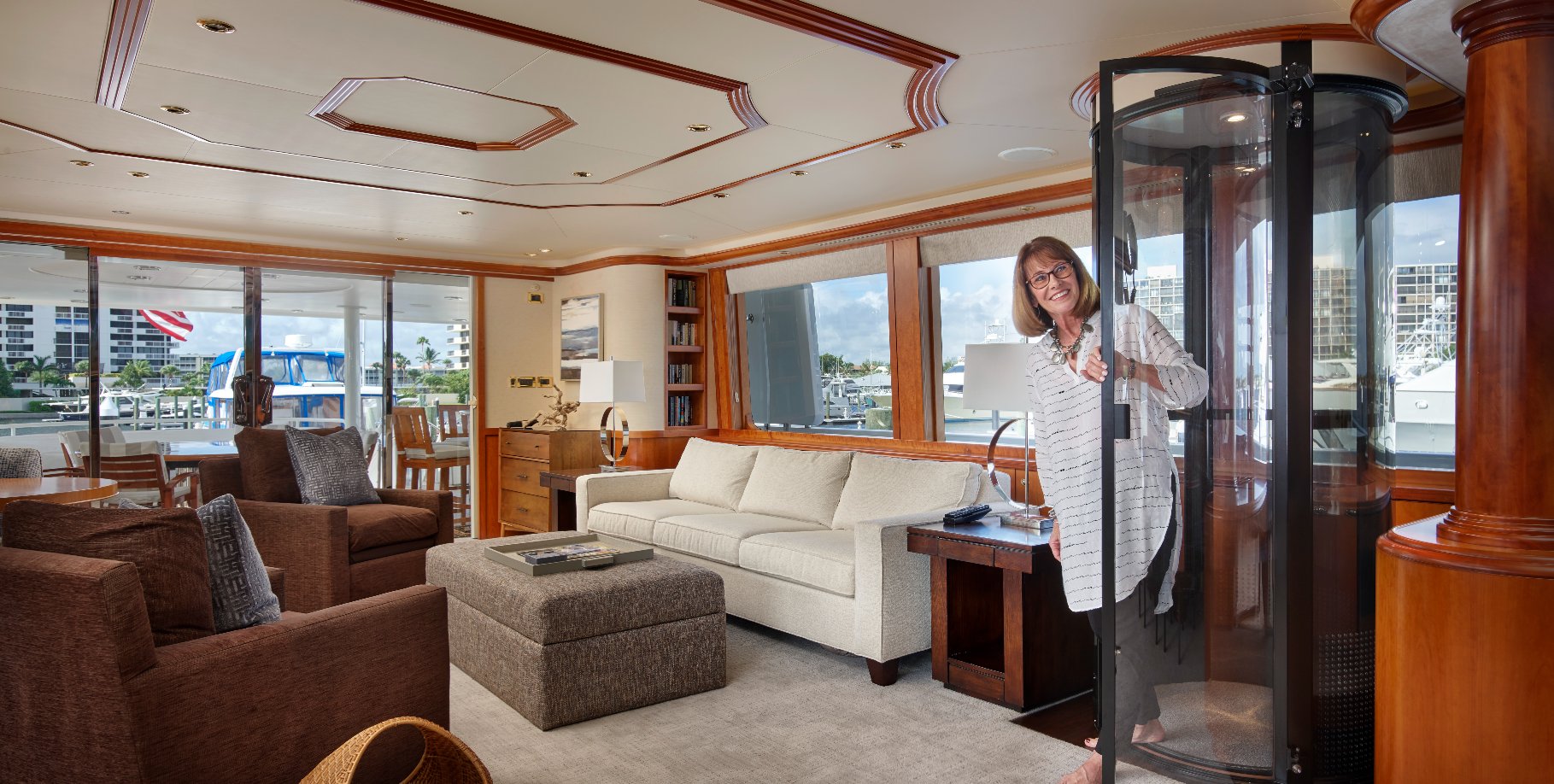When considering a home elevator, a chairlift elevator often comes to mind as the best option.
In recent years, the pneumatic chairlift elevator has gained significant attention for its unique features and benefits.
This type of elevator is not only practical but also offers an aesthetically pleasing solution for modern homes.
Understanding the Chairlift Elevator
A chairlift elevator is designed to transport people and goods between different floors of a building.
These elevators are particularly useful for those with mobility issues, providing a safe and convenient way to move around the home.
Why Choose a Pneumatic Chairlift Elevator?
Pneumatic chairlift elevators stand out due to their innovative design and functionality.
Unlike traditional elevators, pneumatic elevators use air pressure to move the cab between floors.
This technology eliminates the need for cables, pulleys, and counterweights, resulting in a smoother and quieter ride.
Benefits of a Pneumatic Chairlift Elevator

Space-Saving Design
One of the most significant advantages of a pneumatic chairlift elevator is its compact design.
These elevators require less space compared to conventional elevators, making them ideal for homes with limited room.
Easy Installation
Pneumatic elevators are easier and faster to install.
They do not require a machine room or a deep pit, which simplifies the installation process and reduces construction costs.
Energy Efficiency
Pneumatic chairlift elevators are highly energy-efficient.
They consume less power since they rely on air pressure for operation.
This eco-friendly feature makes them an attractive option for environmentally conscious homeowners.
Safety Features
Safety is a paramount concern for any home elevator.
Pneumatic chairlift elevators are equipped with multiple safety features, such as an automatic braking system and emergency lowering capabilities.
These features ensure the safety of passengers at all times.
The Smith Family’s Experience
Let’s take a closer look at how a pneumatic chairlift elevator transformed the Smith family’s home.
Mr. and Mrs. Smith live in a two-story house with their elderly parents.
Due to mobility issues, Mr. Smith’s father found it challenging to navigate the stairs.
After researching various options, the Smiths decided to install a pneumatic chairlift elevator.
The installation process was quick and hassle-free.
The elevator’s sleek design seamlessly integrated into their home without compromising on space or aesthetics.
Mr. Smith’s father now enjoys the freedom to move between floors effortlessly, enhancing his quality of life.
Technical Specifications of Pneumatic Chairlift Elevators
| Feature | Description |
|---|---|
| Load Capacity | Up to 500 pounds |
| Speed | 20-40 feet per minute |
| Power Requirement | 220V, 25-30 AMP single phase |
| Exterior Diameter | Typically around 37 inches |
| Interior Diameter | Typically around 32 inches |
| Number of Stops | Up to 4 stops |
| Materials | Aluminum and polycarbonate |
Choosing the Right Pneumatic Chairlift Elevator
When selecting a pneumatic chairlift elevator, it’s essential to consider your specific needs and preferences.
Here are a few factors to keep in mind:
Load Capacity
Ensure the elevator can comfortably accommodate the weight of its intended users and any additional items.
Speed
Consider the elevator’s speed and how quickly you need to travel between floors.
Aesthetic Design
Look for a design that complements your home’s interior.
Many pneumatic elevators offer customizable options to match your décor.
Maintenance
Check the maintenance requirements and availability of service providers in your area.
Installation Process
The installation of a pneumatic chairlift elevator involves several steps:
- Site Assessment: A professional will assess your home to determine the best location for the elevator.
- Design and Customization: Based on your preferences, the elevator will be designed to fit your space.
- Installation: The elevator components are assembled and installed. This process typically takes a few days.
- Testing and Inspection: The elevator is thoroughly tested to ensure it operates smoothly and safely.
Costs and Budgeting
The cost of installing a pneumatic chairlift elevator can vary based on several factors, including the model, customization options, and installation complexity.
On average, homeowners can expect to spend between $20,000 and $50,000.
While this may seem like a significant investment, the benefits in terms of convenience, accessibility, and home value can outweigh the initial cost.
Maintenance Tips
To keep your pneumatic chairlift elevator in top condition, regular maintenance is crucial.
Here are some tips to ensure optimal performance:
- Routine Inspections: Schedule regular inspections by a certified technician to check for any wear and tear.
- Clean the Cab: Keep the elevator cab clean and free from debris.
- Check Safety Features: Regularly test the emergency and safety features to ensure they are functioning correctly.
- Lubricate Moving Parts: Ensure that all moving parts are properly lubricated to prevent mechanical issues.
Future of Pneumatic Chairlift Elevators
The future of pneumatic chairlift elevators looks promising, with ongoing advancements in technology.
Manufacturers are continually working to improve efficiency, safety, and design.
We can expect to see even more innovative features and enhanced performance in the coming years.
Advanced Features of Pneumatic Chairlift Elevators
Pneumatic chairlift elevators are equipped with several advanced features that set them apart from traditional elevators.
These features enhance the user experience and improve the overall functionality of the elevator.
Air Pressure System
The air pressure system is the heart of a pneumatic chairlift elevator.
This system creates a vacuum above the cab, allowing it to rise, and equalizes the pressure below the cab to lower it.
The precision of this system ensures smooth and controlled movement between floors.
Eco-Friendly Design
Pneumatic elevators are designed to be eco-friendly.
They consume less energy compared to traditional elevators and produce minimal noise, making them a sustainable choice for modern homes.
Panoramic View
Many pneumatic chairlift elevators come with a panoramic design, offering a 360-degree view from within the cab.
This feature not only enhances the aesthetic appeal but also reduces the feeling of confinement, making the ride more enjoyable.
Emergency Features
Safety is paramount in pneumatic chairlift elevators.
They are equipped with an emergency brake system that activates automatically in case of power failure.
Additionally, an emergency battery backup ensures the elevator can be safely lowered to the nearest floor.
Soft Start and Stop
The soft start and stop feature ensures a gentle acceleration and deceleration of the cab.
This reduces the mechanical stress on the system and provides a smoother and more comfortable ride for the passengers.
Detailed Technical Specifications
| Specification | Description |
|---|---|
| Drive System | Vacuum technology |
| Control System | Microprocessor-based control |
| Cab Lighting | LED lighting |
| Ventilation | Built-in ventilation system |
| Door Type | Automatic sliding or swing doors |
| Communication | Intercom system for communication between cab and control room |
| Compliance | ADA compliant and meets international safety standards |
Comparing Pneumatic Chairlift Elevators to Traditional Elevators
When deciding between a pneumatic chairlift elevator and a traditional elevator, it’s essential to consider the differences.
Installation Complexity
Traditional elevators often require extensive construction work, including a machine room and a deep pit.
In contrast, pneumatic chairlift elevators are easier to install and require less structural modification.
Maintenance Requirements
Traditional elevators have more complex mechanical systems, leading to higher maintenance needs and costs.
Pneumatic elevators, with fewer moving parts and no cables or counterweights, require less maintenance.
Operating Costs
Pneumatic chairlift elevators are more energy-efficient, resulting in lower operating costs over time.
Their reliance on air pressure rather than hydraulic fluids or electricity makes them a cost-effective choice.
Common Applications of Pneumatic Chairlift Elevators
Pneumatic chairlift elevators are versatile and can be used in various settings.
Residential Homes
The most common application is in residential homes, providing easy access between floors and enhancing mobility for elderly or disabled individuals.
Vacation Homes
For vacation homes with multiple stories, pneumatic chairlift elevators offer a convenient way to move luggage and supplies between floors.
Apartments and Condominiums
In multi-story apartments and condominiums, pneumatic elevators can be installed to provide an alternative to stairs, increasing the accessibility of upper floors.
Commercial Spaces
While less common, some small commercial spaces use pneumatic elevators for transporting goods and providing access to different levels.
Future Trends in Pneumatic Chairlift Elevator Technology
The future of pneumatic chairlift elevators is bright, with several trends set to enhance their functionality and appeal.
Smart Technology Integration
Integration with smart home systems is a significant trend.
Future pneumatic elevators will likely feature smart controls, allowing users to operate the elevator through their smartphones or voice commands.
Enhanced Safety Features
Advancements in safety technology will lead to even more robust safety features, including advanced sensors and automated emergency response systems.
Customizable Designs
As demand for personalized home features grows, manufacturers will offer more customizable design options to match the unique aesthetics of modern homes.
Improved Energy Efficiency
Ongoing research and development will focus on making pneumatic elevators even more energy-efficient, reducing their environmental impact.
Mrs. Johnson, who has arthritis, found climbing stairs increasingly difficult.
After exploring various options, the Johnsons chose a pneumatic chairlift elevator for its sleek design and easy installation.
The elevator not only improved Mrs. Johnson’s mobility but also added a modern touch to their home.
Conclusion
In summary, the chairlift elevator is an exceptional choice for enhancing home accessibility.
The pneumatic chairlift elevator, in particular, offers numerous benefits, including space-saving design, easy installation, energy efficiency, and advanced safety features.
With ongoing advancements in technology and design, pneumatic chairlift elevators are set to become even more popular in the future.
Whether you are looking to improve mobility for family members, increase the value of your home, or simply enjoy the convenience of an elevator, a pneumatic chairlift elevator is a worthy investment.
With proper maintenance and the right features, this modern solution can transform your home, making it more accessible and comfortable for everyone.








